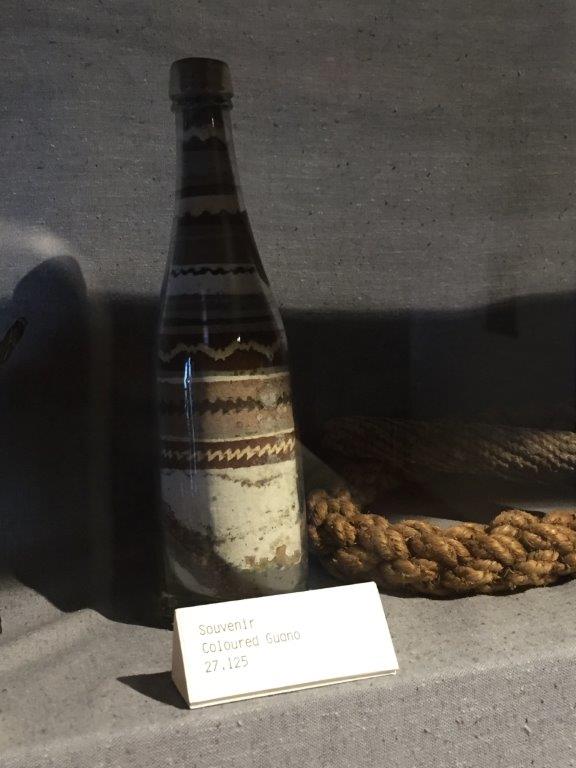My Favorite Things: Guano Bottle

Maritime Museum of the Atlantic
Guano was essentially seabird or bat excrement that was gathered for use as fertilizer. The word comes from the Andean indigenous language Quechua, and refers to any form of dung used as agricultural fertilizer. There's evidence that the Andes people had gathered guano for centuries.
The guano in Europe was not as good quality due to the high levels of rainfall & the humidity. In the 1800s, European countries looked towards South America, and in particular the Chincha Islands, off the coast of Peru, where guano deposits were very high mounds.
Ships from all over the world, including the Maritime Provinces, came to load up with guano in order to trade and make a profit. During the peak time of guano trade, up to 300 ships a year would visit the Chincha Islands. They sometimes had to wait offshore for days before loading up. Often, it was prisoners and Chinese indentured servants who were mining the resource.
Not only was it used for fertilizer, but also gunpowder. In the 1850s, it was suggested as a medicinal use for people who had bad headaches, itchy nostrils, back or thighs & symptoms of hay fever! It is thought that the bottles of guano art were made by the Chinese miners on the Chincha Islands, using different colour seabird droppings. Many of these were brought back to the Maritimes and ended up on a mantlepiece.
By the end of the 19th century, the guano had been almost depleted. Miners in the caves disturbed the bats habitat and destroyed the ecosystem. Many organisms lived off of the bats’ guano. Eventually, the bats left the caves and did not return. The Chincha Islands lost millions of seabirds due to the mining disturbances.
The Islands have bounced back in current times. There's a stable population of Boobies (seabirds closely related to the gannets) and pelicans, and guano is once again being mined but at a sustainable level. It is strictly controlled by the Peruvian government, and the Chincha Islands are federally protected. The men don't use loud machinery, and they move around from island to island so they do not stress out the birds. The guano is being using by the Peruvians as fertilizer instead of costly synthetic fertilizer, and as more people are interested in organic farming.
There will never be the huge mounds of guano from the 19th century era because there are not as many birds due to poaching and overfishing of anchovies, the bird's main source of food. The bottle of guano art serves as a memory of an important cargo for the Maritime trade and economy during the Days of Sail.
-Jacqueline Bridges, Visitor Experience Team, Maritime Museum of the Atlantic